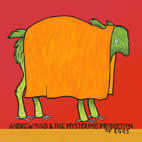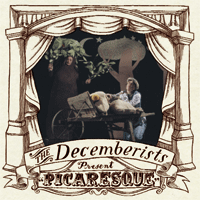One of the communications industry topics I have been following off and on for the past half dozen or so years is the idea of e-paper. One story that got very little press (that I have seen) is this
announcement from Fujitsu that it had developed the world's first color e-paper. Shortly thereafter, I was contacted by Robyn Weisman from Publish.com to add a few comments for
this story on the topic. Robyn didn't use nearly a fragment of what I had said (avoiding the more cience-fictiony things I had mentioned), but this blog idea seemed like a ripe enough venue to dwell on the matter at greater length, since i do believe that e-paper, when it finally becomes "ready for prime time" has the potential to be a major player in the future of media.
E-paper in general is still pretty much a technology rather than a sellable product right now, and many of its applications fall squarely in the realm of science-fiction, but are inching closer toward reality every day. (I confess I was quite jazzed to read the release you had sent. I had read an article in
Scientific American a year or so ago about thin, flexible displays, but didn’t think they were this far along.)
The end uses that Fujitsu cites in their release are certainly do-able and have the potential to usurp a lot of work from what are now print applications--specifically, large-format printing, but it certainly doesn’t end there. (People accuse me of being “down” on the printing industry. Gee, I can’t imagine why...) The idea of using digital displays in lieu of static/printed signage is an increasingly popular one, if for no other reason than it allows for the ability to dynamically change content. This means that signage, outdoor displays, and other such applications can be sold in “day parts,” charging a higher rate to display an ad during rush hour than at other times of day. This isn’t a new concept (we’ve all seen those billboards with the rotating panels that have several different ads on the same billboard)—but the idea of doing it electronically and potentially with rich media ramps up the “coolness” factor. (In New York City, they’re already using video display signage on subway entrances. I haven’t been to San Francisco in a long time, but I suspect electronic signage is turning up in more and more places there, too, having usually been a higher-tech city.)
It also allows outdoor advertisers to change their messages dynamically to take advantage of the old advertising slogan, “If it’s raining, sell them an umbrella.” If the weather turns inclement, it becomes easy to have an electronic sign advertise a sale on umbrellas.
Fujitsu cites store displays and tags--imagine what will happen when information can be beamed from an electronic display to a shopper’s handheld computer and/or cellphone. The shopper can then go out onto what will no doubt be the ubiquitous wireless Web and get info on that item, compare reviews, maybe even compare prices at other locations (depending on whether it’s the store or the manufacturer facilitating this). Stores can also use electronic tags to change pricing willy-nilly.
Menus was one application Fujitsu cited and I had not thought of that, but it would allow restaurants to change their menus dynamically, so that if a restaurant were out of, say, the man-eating prawns in pesto sauce, they could take them off the menu and keep prawn-loving diners from being disappointed. And once menus become electronic, how much more difficult would it be to add interactivity so that diners can order their meals directly by selecting menu items and then sending the order wirelessly to the kitchen. (I just made that up, but it certainly sounds plausible. Not today, or tomorrow, and maybe not next week, but some day. Hmm...if that does happen, how do you tip?)
Here’s where things get interesting. E-paper may also be the “killer app” for e-books (or would that be vice versa?). And not just e-books, but e-magazines and e-newspapers, as well. Now you’ve potentially got an electronic display that can emulate the form factor of either a book or magazine or newspaper. Remember that scene in the movie “Minority Report,” where a subway commuter is reading a newspaper whose headlines change dynamically? That’s not quite as farfetched as you may think. But then that begs the question: does e-paper simply provide another medium for the dissemination of static information, or does it just act as a portable, thin, wireless Web browser? My suspicion, without knowing what’s really going on in research labs, is that it will begin as the former and end up as the latter--or a combination of the two. (After all, that certainly would be more desirable than watching movies on a cellphone, which is already becoming possible, for some reason.) If e-paper is to have any impact on periodical publishing (and I believe some day it will) it will have to have some dynamic or wired (or, better yet, WiFi) component so that e-paper publications can be as up-to-the-minute and current as the Internet and cable.
There is also a great potential for e-forms, once an interface can be added that will allow form fields to be filled in and the data saved and exported. Just think--you could buy a house without filling out what is essentially the equivalent of a small rain forest. (However, we should bear in mind that just because something is paperless doesn’t mean it’s necessarily “green”; electronic media use energy in some form or other, and the production of energy isn’t always ecologically friendly.)
Now, lest this all sound like I work for Fujitsu’s PR department, let me say that I really haven’t seen their implementation in person, so I can’t speak to the quality or usability issues. But the idea is certainly an exciting one (unless you’re connected with the printing industry, in which case I’d recommend stocking up on Prozac) and has the potential to take electronic media even further than it is now.
Like most electronic media, it’s impact will ultimately be felt more on a generational scale than a day-to-day or month-to-month one.
At some point, e-paper is probably going to be one of the many disparate media that publishers will need to provide content for. The average magazine (or newspaper) today has about three, maybe four potential end media: print, Web, e-zine (the Zinio or NewsStand approach), and wireless (like PDA- or cellphone-formatted content like the AvantGo approach). Throw RSS feeds in there and maybe you’ve got five. Granted, not all of them will continue (and I’m not going to lay odds on which ones will be the first to go), but for now, that’s what publishers have to contend with.
Now, depending on what type of input an e-paper-based magazine will support--that could add another one. It will really depend on how the content gets delivered and what navigation and interactivity options developers want to put into it. It may seem a tad premature to be talking about this kind of thing now, but production and technology-wise, now might be the time to start thinking about it. It will no doubt become a force to be reckoned with. How soon that will be is anyone’s guess. Three years? Five years? Ten years? Hard to say. There is a great momentum building with all sorts of new media emerging--TV shows on cellphones, podcasting, movies over the Internet--so unless something happens to curtail all the R&D going on these days, this may be the most propitious time for e-paper initiatives.
The development of readable, usable e-paper-based publications could cause a tremendous shake-up in the traditional publishing model. I dare say it has the potential to be the definitive publishing medium of the 21st century.
I confess, I do find the idea of e--paper to be very exciting; perhaps it's its inherent geek appeal. Who knows. I’ve always liked the idea of electronic media such as e-books even if the currently available e-book or e-zine options don’t quite work for me. (I’m moving soon, and as I start packing up and schlepping all my books across town, I fantasize about being able to store them all on a single CD or DVD.) The idea of e-paper-based publications has the potential (and remember, most of this exists in my imagination right now) to provide the best of both worlds: the form factor, portability, and readability of print (if it ends up doing that--a big if) and the space-saving, tree-saving, and time-saving advantages of electronic media (and the ability for its content to be updated on-the-fly).
Ultimately, it will depend on what gets done with the technology to make it more practical. Integrating it with other media/devices? Attachments to cellphones or PDAs? As part of clothing or fashion accessories? Embedded in the skin for “rich media tattoos”? The sky--or the skin--is the limit.


